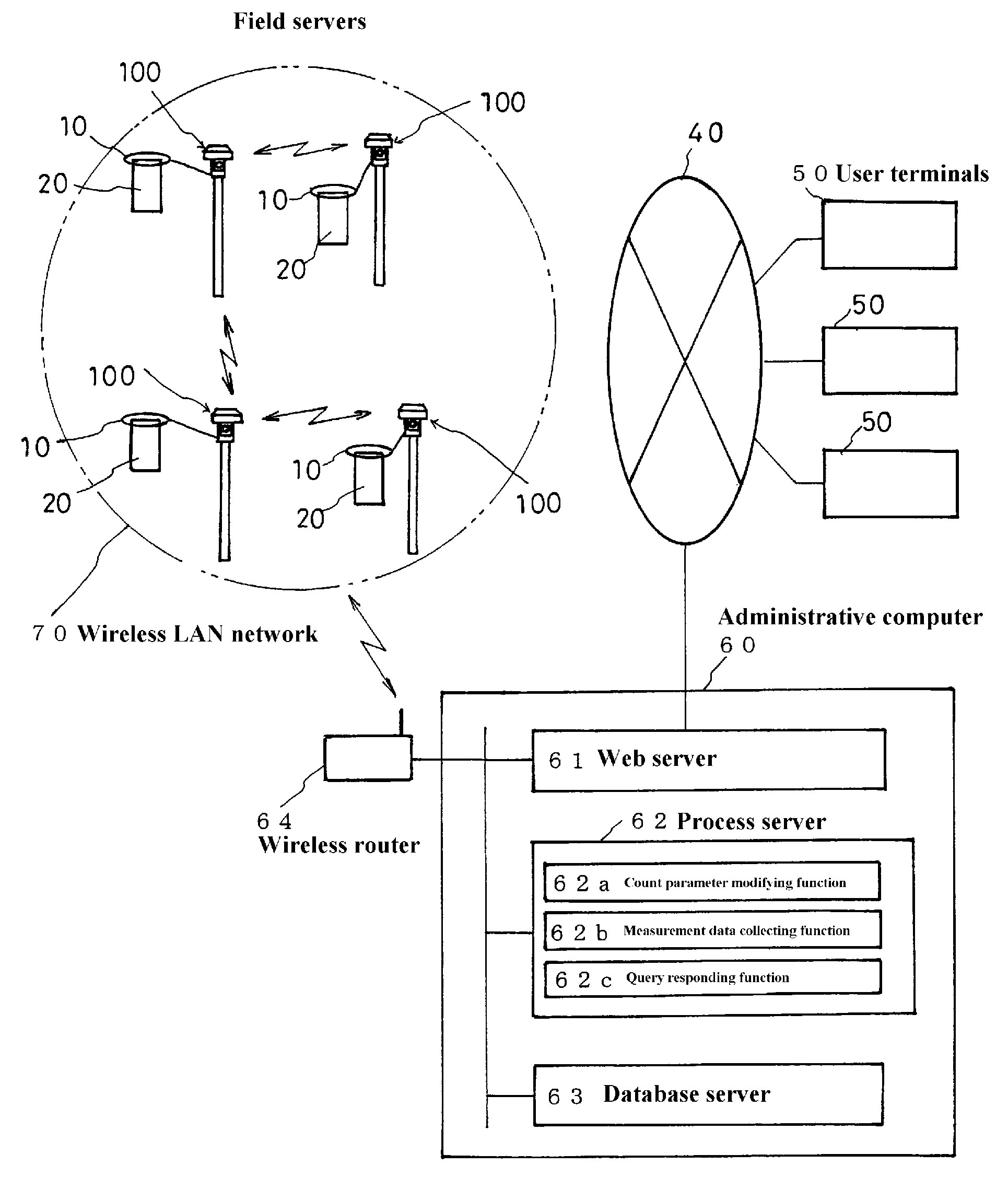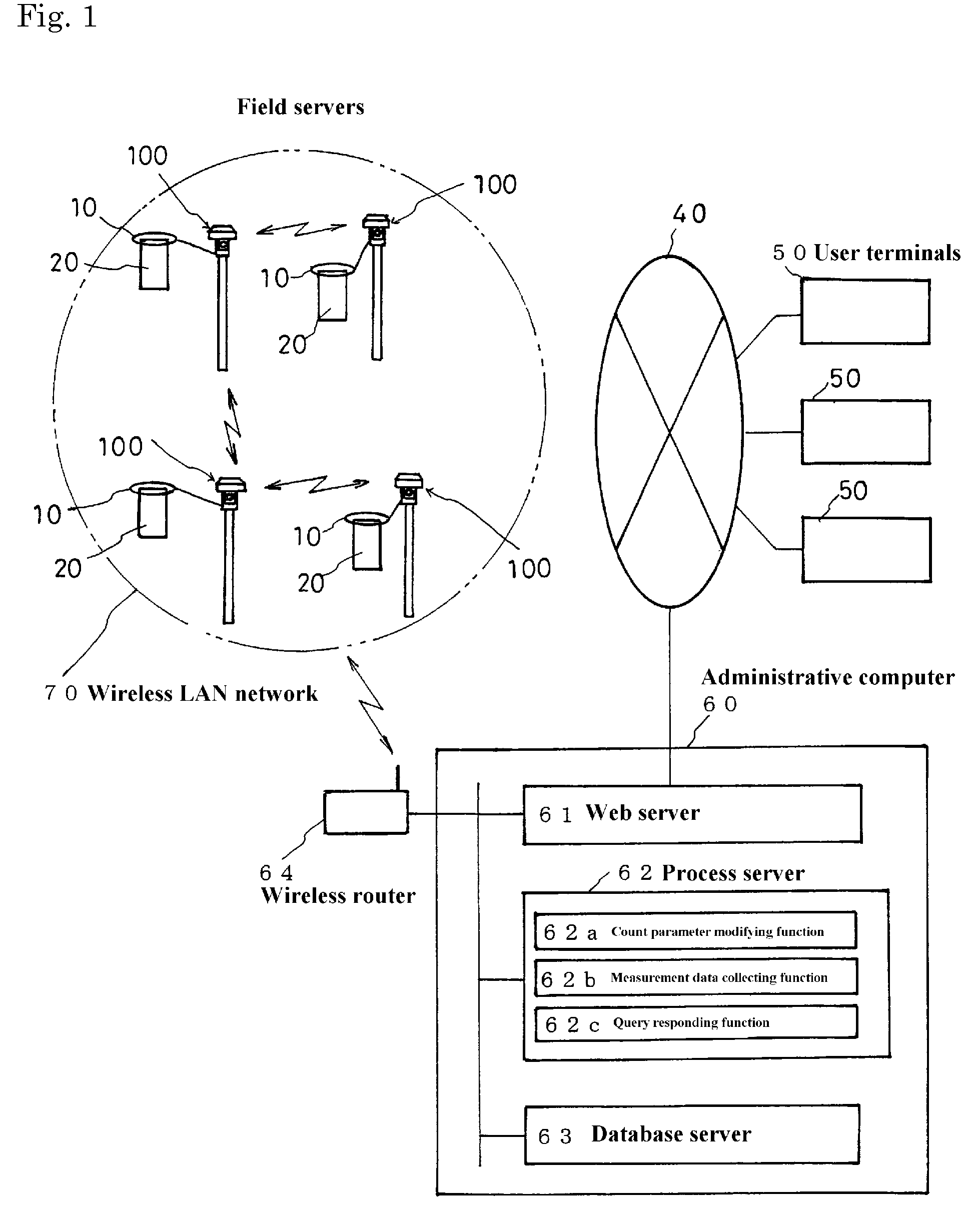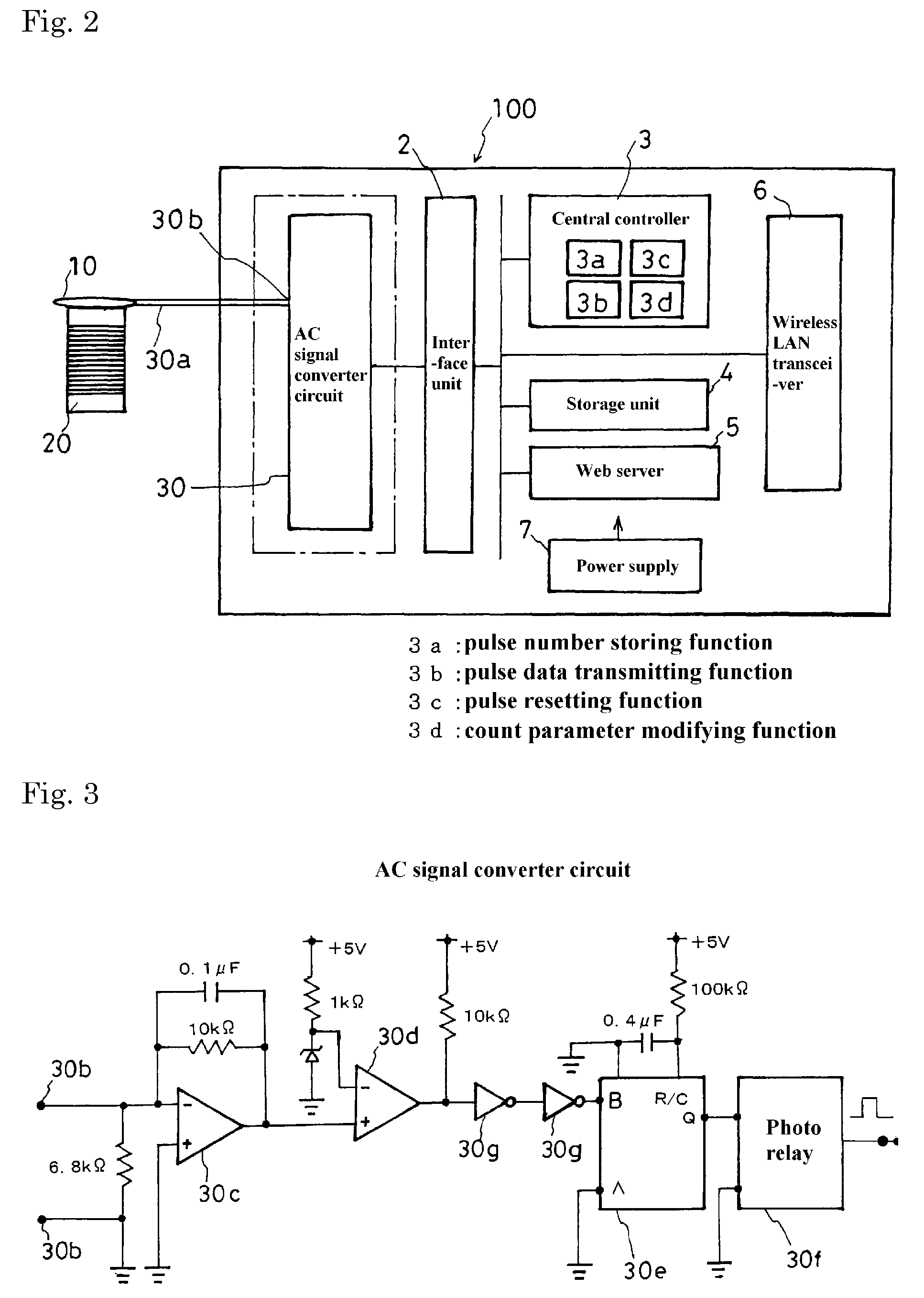Pulse container for an insect electrocutor
a technology of electric pulses and containers, applied in the field of pulse counters, can solve the problems of inability to count and display the number of harmful insects killed, the apparatus is a mechanically ambitious product, and the installation of apparatuses is difficult, etc., to achieve the effect of reducing agricultural production costs, easy and inexpensive counting of electric pulses, and avoiding costs and dangers
- Summary
- Abstract
- Description
- Claims
- Application Information
AI Technical Summary
Benefits of technology
Problems solved by technology
Method used
Image
Examples
Embodiment Construction
[0077]FIG. 1 is an explanatory diagram conceptually illustrating the structure of a pulse counter for counting electric pulses using field servers 100 according to a preferred embodiment of the present invention.
[0078]The pulse counter is configured of one or a plurality of field servers 100 connected to a wireless LAN network 70, an internet 40, an administrative computer 60 operated by an administrator in charge of managing the field servers 100, and user terminals 50 connected to the internet 40.
[0079]An insect electrocutor 20 is positioned near each of the field servers 100 for attracting insects present in the agricultural region and killing them by electrical discharge between electrodes to which a high voltage is applied. An electromagnetic detection coil 10 is disposed above or around the insect electrocutor 20 for detecting changes in the electromagnetic field caused by electrical discharges. An AC signal converter circuit 30 (see FIG. 2) is disposed in each field server 10...
PUM
 Login to View More
Login to View More Abstract
Description
Claims
Application Information
 Login to View More
Login to View More - R&D
- Intellectual Property
- Life Sciences
- Materials
- Tech Scout
- Unparalleled Data Quality
- Higher Quality Content
- 60% Fewer Hallucinations
Browse by: Latest US Patents, China's latest patents, Technical Efficacy Thesaurus, Application Domain, Technology Topic, Popular Technical Reports.
© 2025 PatSnap. All rights reserved.Legal|Privacy policy|Modern Slavery Act Transparency Statement|Sitemap|About US| Contact US: help@patsnap.com



